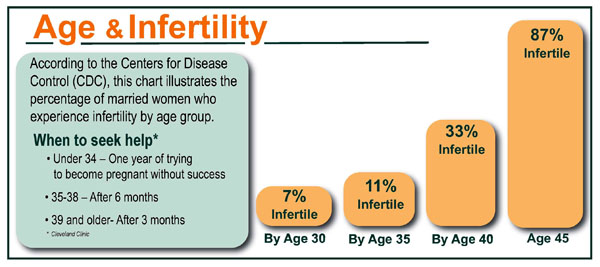By Samuel C. Pang, M.D., Medical Director, Reproductive Science Center of New England, Lexington, MA and speaker at RESOLVE New England’s upcoming 20th Annual Fertility Treatment, Donor Choices, and Adoption Conference on Saturday, November 2, 2013.
Many people are aware that the fertility potential of a woman declines with increasing age. Most, however, are not aware of how soon fertility begins to decline. The fertility potential of the average woman begins to decline appreciably at the age of 35 years, and begins to decline dramatically beyond the age of 40 years.

This discusses the main factors that contribute to the decline in fertility potential of women with increasing age, as well as some of the assessment tests and treatment options. There are two main reasons that explain the decline in fertility potential of women beyond the age of 40 years. The first is the phenomenon of chromosomal aneuploidy and the second is the concept of decreasing ovarian reserve.
Chromosomal Aneuploidy
This refers to the abnormal number of chromosomes in the egg or the embryo. As a woman ages, an ever-increasing proportion of the eggs she releases contain an abnormal number of chromosomes.
Chromosomal aneuploidy accounts for three consequences in the reproductive efforts of women who are 35 years of age or older:
1. Higher risk of having a baby with Down Syndrome
2. Higher risk of spontaneous miscarriage
3. Higher risk of severe abnormalities of the embryo
4. Increased difficulty getting pregnant
Ovarian Reserve
All women are born with a genetically pre-determined lifespan to their ovarian function which generally begins to decline about 15 years prior to menopause. Causes of reduced ovarian reserve (note link to http://www.rscnewengland.com/fertility-information/ovarian-reserve.cfm ) may include:
1. Environmental factors or disease conditions may shorten the lifespan of a woman’s ovaries.
2. Smoking cigarettes is one of the most common and important factors that has been found to decrease ovarian reserve.
3. Exposure to chemotherapy agents or radiation therapy used in the treatment of cancer.
4. Disease conditions of the ovaries, such as ovarian endometriomas, which can destroy ovarian tissue, and may result in decreasing ovarian reserve.
There are several methods of evaluating ovarian reserves such as:
1. Blood hormone tests to evaluate Follicle Stimulating Hormone (FSH) and Estradiol (E2) levels during menstruation
2. Ultrasound evaluation of the size of the woman’s ovaries and the number of measurable small (antral) follicles
If there are concerns about ovarian reserves for any of the above noted reasons or because there is a family history of miscarriages, abnormal births or early menopause (before 50), early fertility screening can help determine the ovarian reserve. And, if the ovarian reserves are of concern, plans can be made for alternatives such as fertility preservation.
Unfortunately, decreased ovarian reserve is a condition that cannot be reversed with medical treatment. Despite major advances in medical technology, no magic pill has been invented which reverses the aging process of the ovaries. Therefore, the first-line option for dealing with decreased ovarian reserve is using very high doses of gonadotropins to stimulate the ovaries, together with various novel protocol strategies which may (or may not) improve ovarian response in some women. If none of these strategies is successful, then the remaining option for achieving a successful pregnancy is the use of donor eggs.
(This article is reprinted with permission from RESOLVE: The National Infertility Association.)
